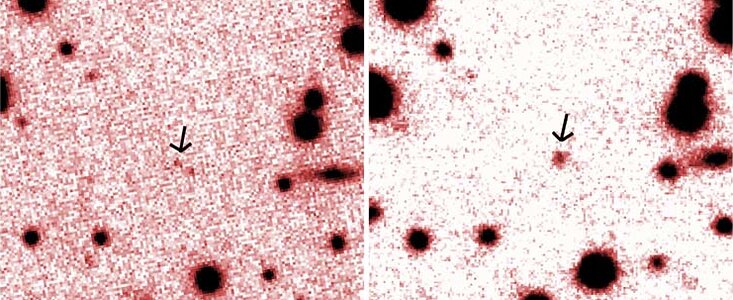NIRI Catches the Infrared Glow of a Major Neutron Star Outburst
29 April 2003
Some highly magnetized neutron stars (magnetars) are known to periodically flare up and emit large quantities of X-rays. These bursts are thought to be caused when the solid surface of the neutron star cracks, triggering "star quakes." The energy is transferred to the magnetic field and out into the hot gas that is trapped near the magnetar. One such X-ray burst was recently observed from a type of magnetar that had not been seen to burst before, conclusively linking two types of neutron stars that had previously been thought to be different.
Gemini's Near-Infrared Imager, NIRI, was trained on the magnetar 1E 2259+586 shortly after X-ray bursts were detected in June of 2002. The magnetar was observed to be more than 3 times brighter in the infrared than it is in its quiescent phase. NIRI re-imaged the magnetar a week later and confirmed that it was fading, showing that the extra infrared (IR) flux was related to the X-ray burst. It is not yet known what physical mechanism is responsible for the release of the IR energy but it is thought to come from electrons trapped in the star's magnetic field. After the burst, the structure of the magnetic field changed, and the electrons may have been accelerated to produce more IR light.
These results were published by Kaspi, V. M., Gavriil, F. P., Woods, P. M., Jensen, J. B., Roberts, M. S. E. and Chakrabarty, D. in "A Major Soft Gamma Repeater-like Outburst and Rotation Glitch in the No-longer-so-anomalous X-Ray Pulsar 1E 2259+586," The Astrophysical Journal Letters, Volume 588, Issue 2, pages L93-L96, May 2003. The Keck data were published by Hulleman, F., Tennant, A. F., van Kerkwijk, M. H., Kulkarni, S. R., Kouveliotou, C. and Patel, S. K. in "A Possible Faint Near-Infrared Counterpart to the Anomalous X-Ray Pulsar 1E 2259+586," The Astrophysical Journal Letters, Volume 563, Issue 1, pages L49-L52, December 2001.


